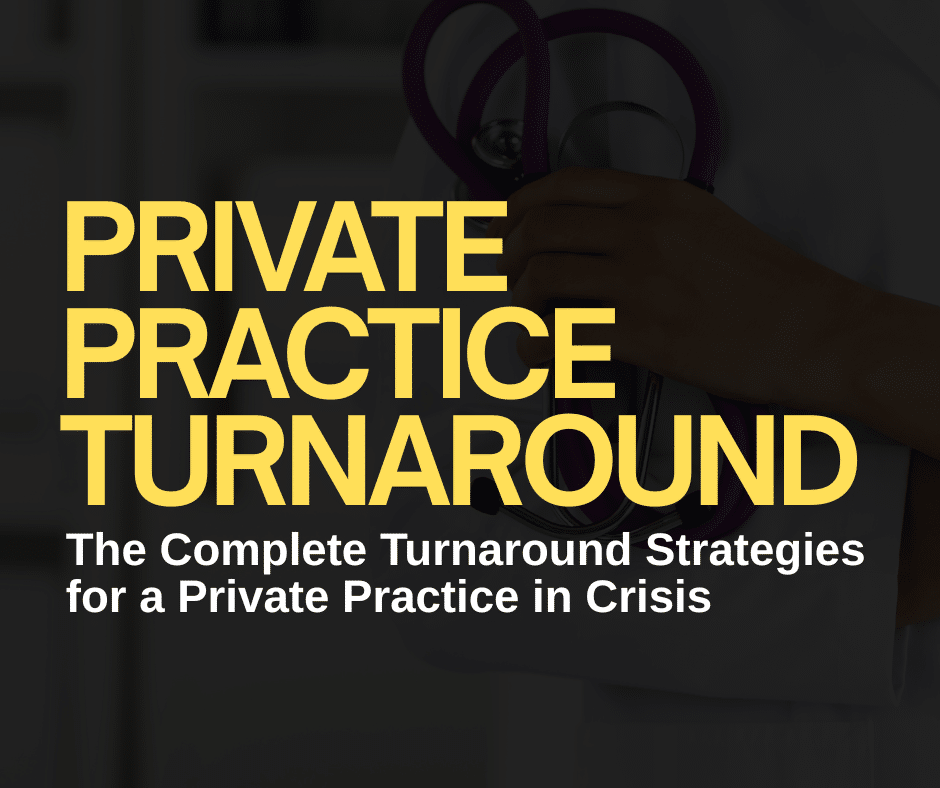When comparing the executive and clinical healthcare salaries, it only makes sense to ensure that we’re defining these terms the same way. So, for this blog post, we’re going to set a parameter that both career options being compared assume the jobs require a medical degree.
Clinical care, as defined by Law Insider, describes this type of medical care to be carried out by anyone who examines, investigates, or diagnoses for the purpose of “or in connection with” any form of medical treatment.
Generally, this involves face-to-face contact, but since the onset of COVID-19, it also includes, when possible, consultation over the phone or via video.
Health care executives are usually “senior-level management officials” with the highest level of decision-making power. They’re usually called C-Suite professionals (all titles starting with the descriptor “Chief,” although executive directors, presidents, and vice presidents can also be considered senior-level management officials.
What’s a Clinical Healthcare Job?

When you’re involved in clinical healthcare, there are two broad distinctions to consider — primary (or general) care or specialty care, which also includes subspecialty care.
Primary Care Physicians
Primary care is usually the first step when someone needs medical care. A primary care physician is a doctor you see for regular checkups. They may be a general internist, a family doctor, or a pediatrician.
General practitioners are considered primary care physicians and are grounded in almost every field of medicine. They are family practitioners who care for patients of all ages, from babies, kids, and teens to adults and the elderly.
General internists, or general internal medicine doctors, are, as the name suggests, doctors of internal medicine. They specialize in internal organs and systems of the body but also offer preventative care and treat anything from warts to chronic illnesses. After medical school, their three-year residency equips them to provide health care for adults 18 and older.
Pediatricians can also practice general care, but they only treat children. Originally, the age at which children were considered to be too old to see their pediatrician was 18, the age was raised to 21 in the 1960s. In 2017, the American Academy of Pediatrics eliminated the age limit and allowed a transition to adult care to happen when the patient was ready.

Both pediatricians and internists can also opt to specialize by taking one to three more years of training. For example, pediatricians can become a neonatologist (preemie doctors), and general internists can choose to specialize in cardiology (heart) or gastroenterology (stomach, intestines, liver, gallbladder, biliary tree, and pancreas).
Because of its more generalized nature, family medicine is one of the most in-demand medical careers. Over the course of their career, family doctors get to develop a doctor-patient relationship in a way that most specialists don’t. The average salary isn’t as high as a specialist doctor’s, but caring for patients over the course of many years can be tremendously rewarding.
Family doctors need to coordinate care with doctors in other specializations, not just with their patients. This not only takes good communication skills but also helps develop operational and administrative skills that could come in handy if they become interested in pursuing an executive healthcare career.
| Specialty | Years in Residency | Average U.S. Salary* |
| General practitioner | 2 | $273,865* |
| General internist | 4 | $231,845 |
| (General) pediatrician | 4 | $251,657* |
Taken from the 2021 Physician Compensation Report
Specialty and Subspecialty Care
Specialists have additional education and are board certified for that specialty. Subspecialists are doctors who drill down into their specialty and pursue a narrow and particular niche. For instance, a gastroenterologist could choose to have a subspecialty in functional bowel disease, reflux oesophagitis, hepatology, or several others.

Check out this post by a Canadian physician, Dr. Bill, for a comprehensive list of doctor specialties and medical subspecialties. It lists and describes each of the specialties in the table below, lets you know how many years in what type of residency it takes to become certified, and lists related sub-specialties.
Although some of the references are specifically for Canada, this list of job descriptions is the same for the U.S.
Average Salary by Speciality
| Specialty | Years in Residency | Average U.S. Salary* |
| Anatomical pathology | 5 | $206,556 |
| Anesthesiology | 5 | $457,867* |
| Cardiology | 6-7 | $537,777* |
| Cardiovascular/Thoracic Surgery | 6 | $552,313* |
| Clinical Immunology/Allergy | 2 | $266,608 |
| Critical Care Medicine | 2-5 | $369,000 |
| Dermatology | 5 | $476,263* |
| Diagnostic Radiology | 5 | $437,590 |
| Emergency Medicine | 5 | $373,000 |
| Endocrinology and Metabolism | 6 | $270,116* |
| Gastroenterology | 6 | $500,400* |
| General Surgery | 5 | $451,151* |
| Geriatric Medicine | 6 | $168,562 |
| Hematology | 6 | $357,292* |
| Internal Medicine | 5 | $295,607* |
| Medical Biochemistry | 5 | $55,375 |
| Medical Genetics | 5 | $254,128* |
| Medical Microbiology and Infectious Diseases | 5 | $294,768* |
| Medical Oncology | 6 | $477,112* |
| Nephrology | 6 | $323,196 |
| Neurology | 6 | $270,900 |
| Neurosurgery | 6 | $773,201 |
| Nuclear Medicine | 5 | $398,544 |
| Obstetrics/Gynecology | 5 | $302,301 |
| Occupational Medicine | 4-5 | $310,934 |
| Ophthalmology | 5 | $454,997 |
| Orthopedic Surgery | 5 | $514,820 |
| Otolaryngology | 5 | $500,400 |
| Pathology | 4 | $292,662 |
| Physical Medicine and Rehabilitation (PM & R) | 5 | $187,200 |
| Plastic Surgery | 5 | $684,663 |
| Psychiatry | 5 | $241,137 |
| Public Health and Preventative Medicine (PhPm) | 5 | $264,539 |
| Radiation Oncology | 5 | $544,313 |
| Respirology | 5 | $149,107 |
| Rheumatology | 6 | $303,511 |
| Urology | 5 | $514,922 |
Taken from the 2021 Physician Compensation Report
Bonuses
When it comes to bonuses, there are many reasons why a bonus may be offered. Setting aside signing bonuses and relocation bonuses, clinical physicians often receive bonuses for “compensation due to productivity.”
How they’re calculated over the course of a year is up to the employer, who may or may not have set up their bonus structure to best benefit a hard-working doctor. There are two main types of concrete bonus structures that would significantly add to a salary’s bottom line. They’re both considered incentive bonuses but are structured differently.
- Net collections-based bonus
- RVU-based bonus
Becker’s Hospital ASC Review announced the results of Medscape’s 2022 survey asking physicians how they felt about incentive bonuses. Apart from how physicians really felt about the bonus system, 49% received an incentive bonus at the end of the year. Thirty-four percent of these bonuses were under $25,000.00.

For family physicians looking for a change in their career, a position on the administrative side of medicine could be ideal. The experience of a family practice that has dealt with a wide range of patients who’ve presented every type of illness and disease over the years gives these general practitioners a distinct advantage.
To step into the administrative side of healthcare will probably require getting additional degrees in business, healthcare, or health policy administration.
What’s an Executive Healthcare Job?
According to Best Colleges, “In the United States health care industry, the top-paid professionals aren’t doctors.” Healthcare executives are “arguably the industry’s highest-paid employees with salaries reaching the $1 million mark.”
And that’s before any bonuses, benefits, and investing options.
The American College of Healthcare Executives reports that this:
“is an exciting time for healthcare management…In their roles, healthcare executives have an opportunity to make a significant contribution to improving the health of the communities their organizations serve.”
While The Joint Commission doesn’t require health care executives to have a medical degree, they do have to be highly educated. And, to be a physician executive in healthcare does require an advanced degree in medicine.
Healthcare executives work in a variety of settings that include:
- Ambulatory care facilities
- Consulting firms
- Healthcare associations
- Home health agencies
- Hospices
- Hospitals and hospital systems
- Integrated delivery systems
- Long-term care facilities
- Managed care organizations (such as HMOs and PPOs)
- Medical group practices
- Mental health organizations
- Public health departments
- University or research institutions
To become a physician executive, you’ll need a medical degree and accumulated years of practical experience. You’ll then need to continue your education with a degree in health care management.
The American Academy of Family Physicians (AAFP), the American College of Physician Executives (ACPE), and the Medical Group Management Association (MGMA) are a few of the professional organizations that offer training for doctors interested in a management or administrative role in healthcare.

A physician executive’s responsibilities are to be the intermediary between doctors and management, oversee physicians, and work with other executives in strategic planning. They also work with staff to make sure the quality of care is of the highest caliber.
“Completing a physician Executive MBA can help clinicians qualify for leadership positions like hospital chief medical officer, medical director, and vice president and utilize their unique healthcare background to run (and improve) facilities.”
Like in many other business structures, top (and senior) executives are known as the C-suite. The positions tend to start with the letter C, for “chief.” Vice-president positions are also considered top executive positions.
The top medical executive salary, according to Salary.com, averaged $429,400 as of August 29, 2022. The salary range extends to between $376,200 and $499,700, depending on various factors, such as location, years of experience, education, number of direct reports, and performance reports.
This average salary across the United States competes only with a handful of clinical salaries:
| Specialty | Average Annual Salary |
| Diagnostic radiology | $437,590 |
| General surgery | $451,151 |
| Ophthalmology | $454,997 |
| Anesthesiology | $457,867 |
| Dermatology | $476,263 |
| Medical oncology | $477,112 |
It falls behind the annual salaries for these specialties:
| Specialty | Average Annual Salary |
| Otolaryngology | $500,400 |
| Gastroenterology | $500,400 |
| Orthopedic surgery | $514,820 |
| Urology | $514,922 |
| Cardiology | $537,777 |
| Radiation oncology | $544,313 |
| Cardiovascular/Thoracic surgery | $552,313 |
| Plastic surgery | $684,663 |
| Neurosurgery | $773,201 |
C-Suite Executive Positions
In order of hierarchy, these are the executive titles, including nine titles unique to healthcare as distinguished by CIO:
Chief Executive Officers (CEOs) are the highest-ranked position and oversee every aspect of their organization.
Vice Presidents, Medical Affairs (VPMAs) play a key leadership role in improving “patient experience, physician alignment, and engagement, and will ensure evidence-based programs, practices, and activities.”
Chief Operating Officers (COOs) manage the day-to-day clinical operations from the bedside to the boardroom.
Chief Financial Officers (CFOs) maintain responsibility for the fiscal affairs of medical institutions.
Chief Medical Officers (CMOs) oversee a facility’s care delivery and represents physicians within the administration.
Chief Clinical Officers (CCOs) represent everyone apart from physicians in a healthcare facility. This includes nurses, volunteers, the pharmacy, and operations that contribute to care coordination.

Chief Quality (or Patient Safety) Officers (CQOs) help organizations as they shift to accountable, collaborative care. With the shift from fee-for-service to pay-for-performance, CQOs work to gain a strategic edge.
Chief Population Health Officer (CPHO) is the role originally known as Chief Wellness Officer. The job remains the same and focuses on community wellness and providing both physical and behavioral health services.
Chief Medical Information Officers (CMIOs) analyze patient data to work towards providing solutions and identifying what initiatives will improve the health of a particular medical facility.
Chief Patient Experience Officers (CPEOs) total focus is on improving as many interactions as possible between patients and healthcare workers.
Chief Patient Engagement Officers (CPEOs) are the tech officers in healthcare, although their duties extend beyond technology and include all aspects of how people interact with the healthcare system.
Chief Incentive Officers (CIOs) work to figure out what incentives can encourage behavior change in management to reduce costs.
Average Salary by Job Title
| Physician Executives | Average Annual Salary |
| Chief Executive Officer | $454,370 |
| Vice Presidents, Medical Affairs | $180,619 |
| Chief Operating Officer | $338,299 |
| Chief Financial Officer | $294,736 |
| Chief Medical Officer | $244,078 |
| Chief Quality Officer | $119,843 |
| Chief Population Health Officer | $86,678 |
| Chief Medical Information Officer | $160,251 |
| Chief Patient Experience Officer | $71,643 |
| Chief Patient Engagement Officer | N/A |
| Chief Incentive Officer | N/A |
Stock Ownership
STAT released a collaborative article last month stating that “The CEOs of approximately 300 healthcare companies collectively took home more than $4.5 billion in 2021.” They analyzed hundreds of financial filings across the U.S. to come up with that jaw-dropping figure.
The critical article claimed that healthcare CEOs made an average of $15.3 million last year, with salaries making up less than 6% of that amount. More than 80% of the compensation came from “the rising fortunes of their stock ownership.”
Bonuses pale in comparison to this “reward” for work done.

Of course, the rarified air that is breathed at the absolute top of executive healthcare isn’t something most of us will ever come close to breathing. For many of us, the passion and sense of vocation we feel towards medicine started with a desire to serve people, and I hope that remains.
One thing does become clear when comparing executive and clinical healthcare salaries — the more education, experience, and skills you have, the higher the salary you can demand.
So, whatever your specialty, choosing a career path in medicine depends on your career ambition and the kind of lifestyle you’ve dreamed of creating. Remember why you entered the field of medicine and commit to a balance of work and life.
Do you have any questions about anything I mentioned in this article? If so, feel free to reach out and contact me, and we can get a conversation going on the topic! I love hearing from my readers and will gladly do my best to answer all your questions!

